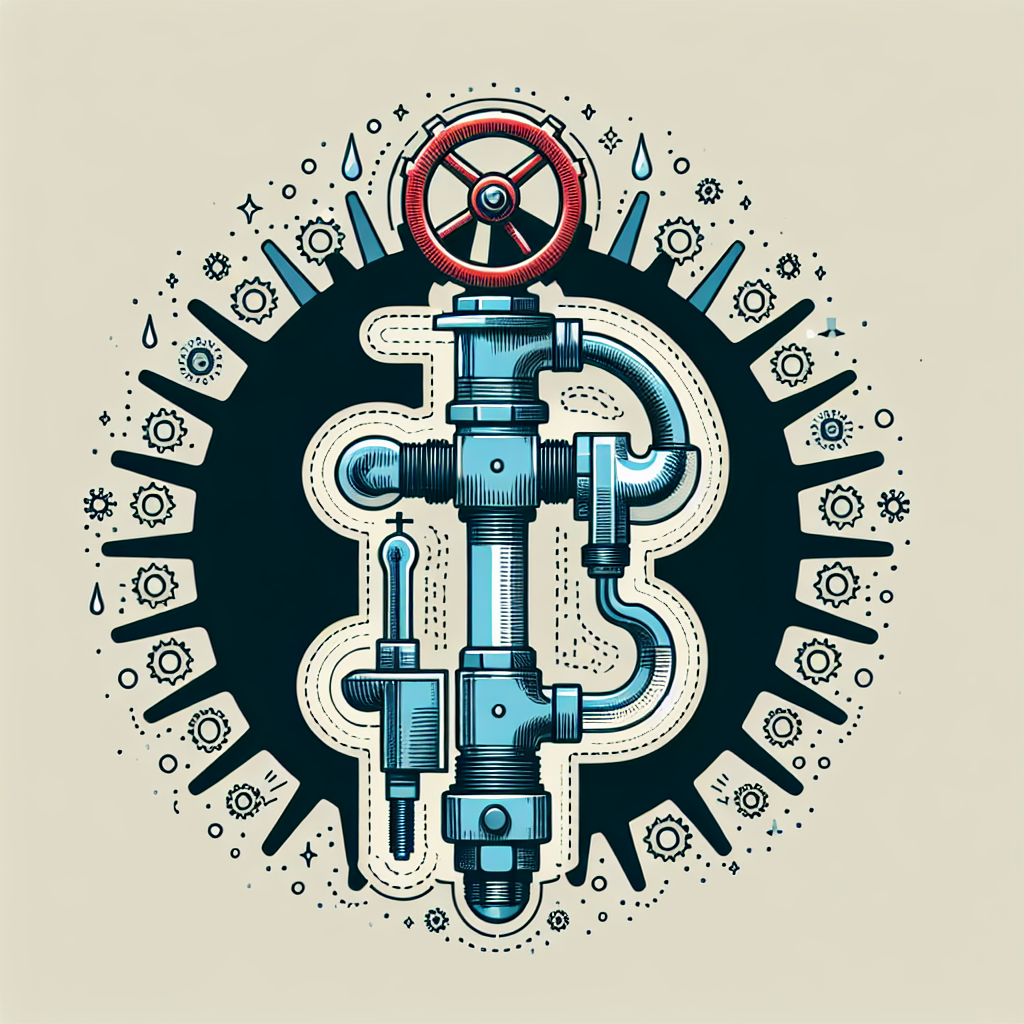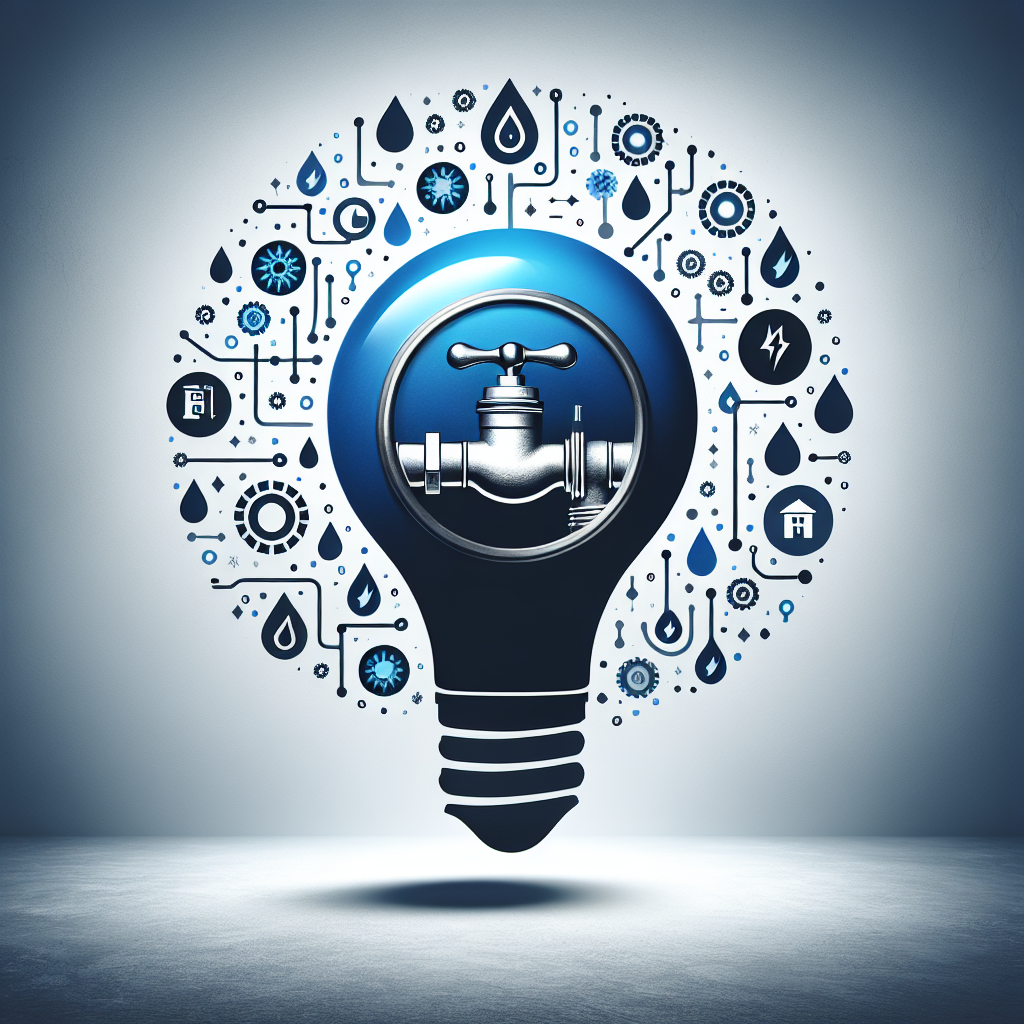Imagine a world where every drop of water is used efficiently, where energy is conserved at every turn, and where plumbing plays a crucial role in achieving these goals. In this article, we will explore the often overlooked but essential role of plumbing in energy efficiency. From the design and installation of water-saving fixtures to the integration of renewable energy sources, plumbing has the power to transform our homes and buildings into models of sustainability. Join us as we uncover the hidden potentials of plumbing and discover how it can contribute to a greener and more energy-efficient future.
I. Introduction
A. Definition of energy efficiency
Energy efficiency refers to the measure of how effectively a system or appliance uses energy to perform its intended function. It is focused on achieving the desired outcome while minimizing energy consumption and waste. Energy-efficient systems not only reduce energy costs but also contribute to the conservation of natural resources and the reduction of greenhouse gas emissions.
B. Importance of energy efficiency
Energy efficiency is crucial in today’s world for several reasons. Firstly, it helps to reduce the negative impact on the environment by minimizing energy consumption and the associated pollution and emissions. Secondly, it plays a significant role in reducing energy bills, saving money for individuals and businesses. Finally, energy efficiency promotes sustainability by conserving natural resources and ensuring their availability for future generations.
II. Understanding Plumbing Systems
A. Overview of plumbing systems
Plumbing systems are responsible for the distribution and removal of water within a building. They consist of a complex network of pipes, valves, fixtures, and appliances that work together to ensure the efficient flow of water for various purposes such as drinking, cleaning, and sanitation.
B. Components of a plumbing system
The main components of a plumbing system include water supply pipes, drainage pipes, fixtures, and appliances. Water supply pipes bring potable water into the building, while drainage pipes remove waste and wastewater. Fixtures such as sinks, toilets, showers, and bathtubs provide access to water, and appliances like water heaters and washing machines enhance convenience and functionality.
C. Water supply systems
Water supply systems are designed to provide a continuous and reliable flow of clean water to various fixtures and appliances in a building. These systems typically connect to a municipal water source or a private well. They incorporate pipes, valves, and pressure regulators to ensure the optimal distribution of water throughout the building.
D. Plumbing fixtures and appliances
Plumbing fixtures and appliances play a crucial role in the functionality and efficiency of a plumbing system. Examples of fixtures include faucets, toilets, showers, and sinks, while appliances include water heaters, dishwashers, and washing machines. Proper selection and maintenance of these fixtures and appliances can greatly impact energy efficiency and water conservation.

III. Energy Efficiency in Plumbing
A. Definition of energy-efficient plumbing
Energy-efficient plumbing refers to the implementation of practices and technologies that reduce energy consumption and waste within a plumbing system. This includes the use of water-efficient fixtures and appliances, insulation to prevent heat loss, efficient water distribution systems, and the incorporation of renewable energy sources.
B. Benefits of energy-efficient plumbing
Energy-efficient plumbing offers a range of benefits. Firstly, it helps to reduce energy bills by minimizing the amount of energy required for heating water and maintaining optimal water pressure. Secondly, it contributes to water conservation by reducing the amount of water consumed and wasted. Additionally, it improves the overall comfort and functionality of a building by ensuring a reliable supply of hot water and efficient water distribution.
IV. Water Heating Efficiency
A. Energy-efficient water heaters
Water heating accounts for a significant portion of energy consumption in many buildings. Energy-efficient water heaters can help to minimize energy waste and reduce costs. Tankless water heaters, for example, heat water on demand, eliminating the need for standby heating. Heat pump water heaters extract heat from the air or ground, making them more efficient than traditional electric or gas-powered heaters.
B. Insulation and heat retention
Proper insulation plays a vital role in water heating efficiency. Insulating water heaters, pipes, and storage tanks helps to prevent heat loss, ensuring hot water remains hot until it reaches its destination. Insulating hot water pipes also reduces the time and amount of water wasted while waiting for hot water to reach the desired temperature.
C. Hot water circulation systems
Hot water circulation systems eliminate the need to run water for long periods to achieve the desired temperature. By ensuring hot water is readily available at each fixture, these systems conserve both water and energy. There are various types of circulation systems, including recirculation pumps, demand-controlled systems, and temperature-actuated systems.

V. Efficient Water Distribution
A. Pipe insulation and heat loss prevention
Insulating pipes not only helps with water heating efficiency but also optimizes water distribution. Insulated pipes reduce heat loss during transportation, ensuring water arrives at its destination at the desired temperature. By minimizing heat loss, less energy is required to maintain a consistent flow of hot water throughout the building.
B. Water-efficient fixtures and appliances
Installing water-efficient fixtures and appliances can significantly impact energy efficiency and water conservation. Low-flow faucets, showers, and toilets reduce water consumption without sacrificing performance or user experience. Additionally, choosing water-efficient appliances such as washing machines and dishwashers can further contribute to the overall efficiency of the plumbing system.
C. Water pressure optimization
Optimizing water pressure is essential for efficient water distribution. High water pressure not only leads to excessive water consumption but also causes undue stress on the plumbing system. By utilizing pressure-reducing valves and maintaining optimal water pressure levels, energy waste and water damage can be minimized.
VI. Efficient Water Consumption
A. Low-flow fixtures and aerators
Low-flow fixtures and aerators are effective ways to reduce water consumption without compromising functionality. These devices restrict the flow of water while maintaining adequate pressure, ensuring water is used efficiently. By incorporating low-flow fixtures and aerators, significant water savings can be achieved, contributing to both energy efficiency and sustainability.
B. Dual-flush toilets
Dual-flush toilets offer users the option to choose between a low-volume flush for liquid waste and a higher-volume flush for solid waste. This versatility allows for more efficient water consumption, as excess water is not wasted unnecessarily. Dual-flush toilets have become increasingly popular due to their ability to conserve water without sacrificing performance.
C. Water-efficient appliances
Water-efficient appliances, such as washing machines and dishwashers, make a significant difference in water consumption. Energy Star-certified appliances are designed to use less water while maintaining effective performance. These appliances often incorporate technologies such as sensor-driven water level adjustment and efficient spray patterns to minimize water waste.
VII. Recirculation and Conservation
A. Importance of water recirculation
Water recirculation systems help to minimize water waste by recirculating hot water back to the water heater instead of allowing it to be wasted down the drain. By reducing water waste, recirculation systems contribute to both water conservation and energy efficiency. These systems can be retrofitted to existing plumbing systems or incorporated into new construction.
B. Greywater recycling systems
Greywater recycling involves collecting and treating water from various sources such as sinks, showers, and washing machines for non-potable uses like irrigation and toilet flushing. By treating and reusing greywater, a significant amount of fresh water can be conserved. Greywater recycling systems integrate with the plumbing system, ensuring efficient water management and reducing the strain on municipal water supplies.
C. Rainwater harvesting
Rainwater harvesting involves collecting and storing rainwater for various non-potable uses such as landscape irrigation and toilet flushing. By implementing rainwater harvesting systems, buildings can reduce their dependency on municipal water supplies and minimize water consumption. Proper integration with the plumbing system ensures effective utilization of harvested rainwater and contributes to overall energy efficiency.
VIII. Role of Plumbing in Insulation
A. Insulated piping systems
Insulation in plumbing systems extends beyond preventing heat loss from water. Insulating pipes also helps to prevent condensation, which can lead to moisture issues and potential damage. Insulated piping systems maintain water temperature while minimizing energy waste and the risk of damage due to condensation.
B. Preventing heat transfer and energy loss
Proper insulation in plumbing systems prevents heat transfer to surrounding areas, reducing energy loss. Insulated hot water pipes, for example, keep the water inside hotter for longer, reducing the need for constant reheating. By preventing heat transfer and energy loss, plumbing insulation improves overall energy efficiency in buildings.
IX. Plumbing Maintenance for Efficiency
A. Regular inspections and leak detection
Regular inspections and timely leak detection are essential for maintaining an energy-efficient plumbing system. Identifying and repairing leaks not only conserves water but also prevents unnecessary energy waste associated with leakage, such as increased water heating costs. Regular inspections also help to identify potential issues before they escalate, ensuring the efficiency and longevity of the plumbing system.
B. Proper maintenance of fixtures and appliances
Proper maintenance of fixtures and appliances is crucial for ensuring energy efficiency and optimal performance. Regularly cleaning aerators and showerheads can help remove mineral buildup, improving water flow and reducing energy waste. Similarly, maintaining water heaters and ensuring proper functionality of valves and sensors in appliances contribute to overall plumbing system efficiency.
C. Preventing water waste
Efficient plumbing maintenance involves adopting simple practices to prevent water waste. Turning off faucets when not in use, fixing leaking toilets promptly, and avoiding unnecessary water consumption are all effective ways to conserve water and promote energy efficiency. By practicing responsible water use, individuals can contribute to a more sustainable future.
X. Conclusion
A. Recap of the role of plumbing in energy efficiency
Plumbing systems play a crucial role in achieving energy efficiency and water conservation. Through the implementation of energy-efficient water heaters, optimized water distribution, efficient water consumption strategies, and the integration of recirculation and conservation systems, plumbing systems can greatly impact overall energy efficiency in buildings.
B. Importance of promoting energy-efficient plumbing practices
Promoting energy-efficient plumbing practices is vital for a sustainable future. By raising awareness about the benefits of energy efficiency, encouraging the use of water-efficient fixtures and appliances, and emphasizing proper maintenance and conservation, individuals, businesses, and communities can collectively contribute to energy savings, cost reduction, and the protection of the environment.

